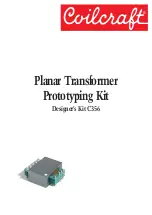
iii
n920BT Regulatory Requirements
PLEASE READ THIS SECTION CAREFULLY
WARNING
:
To satisfy FCC RF exposure requirements for mobile transmitting devices, a separation distance of 23 cm or
more should be maintained between the antenna of this device and persons during device operation. To
ensure compliance, operations at closer than this distance is not recommended. The antenna used for this
transmitter must not be co-located in conjunction with any other antenna or transmitter.
WARNING
:
Operation is subject to the following two conditions: (1) this device may not cause harmful interference, and
(2) this device must accept any interference received including interference that may cause undesired
operation.
WARNING
:
Changes or modifications not expressly approved by Microhard Systems Inc. could void the user’s authority
to operate the equipment. This device has been tested with MMCX connectors with the antennas listed in
Appendix A When integrated in OEM products, fixed antennas require installation preventing end-users
from replacing them with non-approved antennas. Antennas not listed in the tables must be tested to comply
with FCC Section 15.203 (unique antenna connectors) and Section 15.247 (emissions).
WARNING
:
MAXIMUM EIRP
FCC Regulations allow up to 36 dBm equivalent isotropically radiated power (EIRP). Therefore, the sum
of the transmitted power (in dBm), the cabling loss and the antenna gain cannot exceed 36 dBm.
WARNING
:
EQUIPMENT LABELING
The FCC and IC numbers depend on the model of the radio module. Do NOT use the Marketing
Name of the product but the Model to distinguish the Certifications Numbers. This device has
been modularly approved. The manufacturer, product name, and FCC and Industry Canada
identifiers of this product must appear on the outside label of the end-user equipment.
SAMPLE LABEL REQUIREMENT for Model: n920BT:
Contains:
FCC ID: NS908P25 IC : 3143A-08P25
This device complies with Part 15 of the FCC Rules.
Operation is subject to the following two conditions:
(1) this device may not cause harmful interference,
and (2) this device must accept any interference
received including interference that may cause
undesired operation.
































